The luxury items auction market got a boost from the worldwide outbreak of COVID-19, and HK was no exception. Joyce Yip asked industry insiders why this was so.
 Works of art, such as sculpture by KAWS, and luxury goods are increasingly lumped together at cross-category online auctions. (PHOTO PROVIDED TO CHINA DAILY)
Works of art, such as sculpture by KAWS, and luxury goods are increasingly lumped together at cross-category online auctions. (PHOTO PROVIDED TO CHINA DAILY)
Things did not look too rosy for the art market in the beginning of 2020. According to art market research firm, ArtTactic, a global slowing down of art trade was already in the offing, owing to the economic fallout of Brexit and the Sino-US trade war. So when COVID-19 brought art galleries, fairs and live auctions around the world to a complete halt, the losses suffered by the major multinational auction houses — Christie’s, Phillips and Sotheby’s — dropped by a shocking 87 percent.
However, seven months in, COVID-19 has validated the old saying “When one door closes, others open”. Restaurant closures fueled delivery services; class suspensions prompted a flowering of webinar technologies; and the deceleration of live art auctions led to enhanced activity online. The trend also saw an increased trading in luxury items.
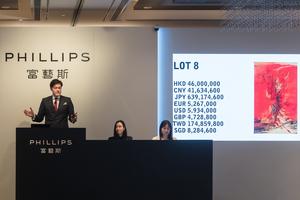 Jonathan Crockett, chairman, Phillips Asia, presents a Zao Wou-ki painting at a live auction in July. (PHOTO PROVIDED TO CHINA DAILY)
Jonathan Crockett, chairman, Phillips Asia, presents a Zao Wou-ki painting at a live auction in July. (PHOTO PROVIDED TO CHINA DAILY)
By March, the online traffic to Sotheby’s website grew by 16 percent. The auction house made headlines by totting up HK$3.22 billion at its rescheduled spring auction in early July, where 90 percent of lots were bought over the phone, online or through absentee bids. A platinum Rolex Daytona Zenith — a one-off creation featuring a Lapiz Lazuli dial — went under the hammer at HK$25.3 million (US$3.3 million), five times its estimate, making it the most expensive Rolex ever sold. An HK$2.1 million Methuselah (six-litre) bottle of 1999 Domaine de la Romanée-Conti fetched the third-highest price in Asia.
Like Sotheby’s, Christie’s has increased the frequency of its online jewellery sales that now include higher-value items. For example, a 28.86 carat D color diamond ring sold for US$2.1 million, the most expensive jewel ever auctioned online.
The trend may be attributed to cash-strapped collectors selling off their valuables when the chips are down. On the other hand, those with sustained buying power are eager to cash in on the opportunity, not unlike many fund managers. At a time of social distancing, practiced worldwide, the gifts of advanced technology — like high-definition photo quality and 3D viewing facilities — have fueled the popularity of online auctions.
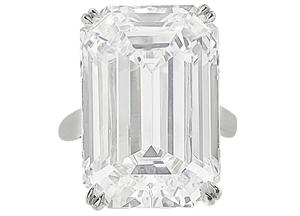 Christie’s sold a 28.86 carat D color diamond ring for US$2.1 million, making it the most expensive piece of jewelry auctioned online. (PHOTO PROVIDED TO CHINA DAILY)
Christie’s sold a 28.86 carat D color diamond ring for US$2.1 million, making it the most expensive piece of jewelry auctioned online. (PHOTO PROVIDED TO CHINA DAILY)
Comfort zone
The biggest drawback of online experiences created to substitute real-life ones is that the excitement of live auctions is difficult to replicate digitally.
“You can only truly appreciate the sensation, that feeling of an abstract with layers and depths by standing in front of it,” says Jonathan Crockett, chairman of Phillips in Asia. At their live auction in July, Phillips offered a range of blue chip art, including paintings by the Chinese-French master painter Zao Wou-ki, as “if we were to offer that online it wouldn’t sell nearly as high.”
As anticipated, the two abstracts were scooped up by a single floor bidder for a combined total of HK$100 million, accounting for half of the total sales.
 A limited-edition Tourbillon watch by Hublot was snapped up at a recent Christie’s online auction. (PHOTO PROVIDED TO CHINA DAILY)
A limited-edition Tourbillon watch by Hublot was snapped up at a recent Christie’s online auction. (PHOTO PROVIDED TO CHINA DAILY)
Besides, collectors are reluctant to offer and buy exceptional works online, which explains the dramatic reduction in high-value art prices during the pandemic.
So to keep the momentum going, auction houses looked at a tried and tested strategy. Blue-chip luxury brands, like Rolex, Patek Philippe, Hermès, and limited-edition whiskey are known to have thrived in times of economic crises when the market for traditional investment products is too volatile. According to GlobalData, a data analytics company listed on the London Stock Exchange, the pre-owned market for all luxury goods is set to be worth US$51 billion by 2023, over double its value in 2018, thanks to more people embracing recycling and the scarcity of coveted pieces. For instance, prices of Hermès handbags have risen by 13 percent in the last 10 years. Also Bonhams opening their inaugural designer handbag and fashion division in January is testament to this sector’s potential.
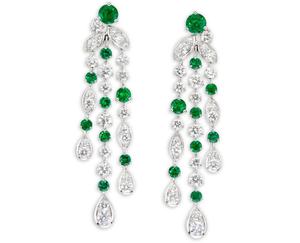 Graff emeralds and diamond ear pendant offered by Phillips at a recent cross-category online sale. (PHOTO PROVIDED TO CHINA DAILY)
Graff emeralds and diamond ear pendant offered by Phillips at a recent cross-category online sale. (PHOTO PROVIDED TO CHINA DAILY)
Buying young
Online auction of luxury items are attracting a much younger demographic than before. This up-and-coming bunch of collectors sees the category as a more bankable option compared to fine art. Bonhams’ five-part luxury online sale in June, for instance, saw registrations from 29 countries, 40 percent of which were first-time buyers and a third were under the age of 40.
Lung Lung Thun, investment director of China International Securities Limited and a renowned watch collector, says this is hardly surprising, given the wealthy are getting increasingly younger. Research Unit Hurun Report confirms that more than 50 self-made billionaires around the world in 2020 are 40 or younger, including seven additions last year. Thun herself started collecting watches in her teens.
“Online auctions make auction houses more approachable,” says Thun. It’s also about making young people mentally adjust to the idea that they may not be able to go to a live auction until the COVID-19 situation improves, she adds.
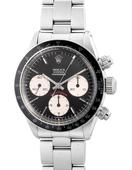 Luxury watch brands, like the Rolex above offered by Phillips, are in high demand at online auctions. (PHOTO PROVIDED TO CHINA DAILY)
Luxury watch brands, like the Rolex above offered by Phillips, are in high demand at online auctions. (PHOTO PROVIDED TO CHINA DAILY)
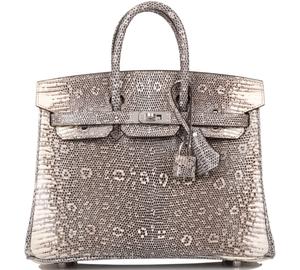 The demand for pre-owned luxury goods, such as this Hermes ombre lizard Birkin presented at a Sotheby’s online auction, is rising. (PHOTO PROVIDED TO CHINA DAILY)
The demand for pre-owned luxury goods, such as this Hermes ombre lizard Birkin presented at a Sotheby’s online auction, is rising. (PHOTO PROVIDED TO CHINA DAILY)
Cross-category online auctions, featuring watches, jewellery, art and more, and targeted at new collectors are on the rise. One successful example is the Refresh: Reload online auction held by Phillips Asia in May, where KAWS sculptures and Takashi Murakami pieces shared spaces with Mikimoto pearl necklaces and Audemars Piguet watches. Ninety percent of the lots were sold, garnering US$2.4 million. Unsurprisingly, a high proportion of the buyers were new to the auction house and more than 40 percent were under the age of 40.
Following the trend, Christie’s will host an online-only sale featuring rare paintings, prints, sculptures and one-offs by leading contemporary artists. Titled Trespassing, the digital auction of more than 90 lots will run from Aug 5 to 19, featuring the likes of KAWS’ hand-printed Astro Boy meets COMPANION figure, estimated to sell at any price up to US$200,000, besides works by Banksy, Invader, a US$70,000 Jonas Jones and more.
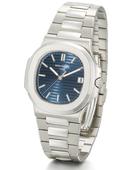 A Patek Philippe Nautilus watch was offered by Sotheby’s at a recent online auction. (PHOTO PROVIDED TO CHINA DAILY)
A Patek Philippe Nautilus watch was offered by Sotheby’s at a recent online auction. (PHOTO PROVIDED TO CHINA DAILY)
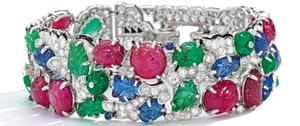 An art deco Cartier bracelet was offered by Sotheby’s at a recent online auction. (PHOTO PROVIDED TO CHINA DAILY)
An art deco Cartier bracelet was offered by Sotheby’s at a recent online auction. (PHOTO PROVIDED TO CHINA DAILY)
“Phillips wants to bring down the boundaries that segregate the different categories and their collectors. Just because you collect Chinese ceramics doesn’t mean you don’t want to buy designer furniture,” says Crockett. “So instead of doing the tried and tested thing of having single-category sales, we mixed things together and ended up with lots selling for a lot more than if they were put into their own dedicated categories. Of course, you still have pieces that require elevating, demand the right prestige… and we have done that by creating a special gallery or enhanced marketing and so on.”
While COVID-19 may have helped boost the auctioning of luxury goods online, it’s still too early to predict if the new generation of collectors will continue to sustain such growth. For the time being, COVID-19 has proved all over again that knowing one’s target audience and good curating are key factors to a successful auction whether it is virtual or live, single or cross-category, and dealing with luxury goods or fine art.


